Emilio Pucci Spring 2025 Collection
In a display steeped in Mediterranean theatricality and contemporary precision, Camille Miceli transported Pucci’s Spring 2025 collection to the hilltop serenity of La Cervara — a medieval abbey turned dramatic setting overlooking the Gulf of Tigullio. If there were any lingering doubts about the refined, visionary direction Miceli is carving out for the storied maison, this collection put them to rest.
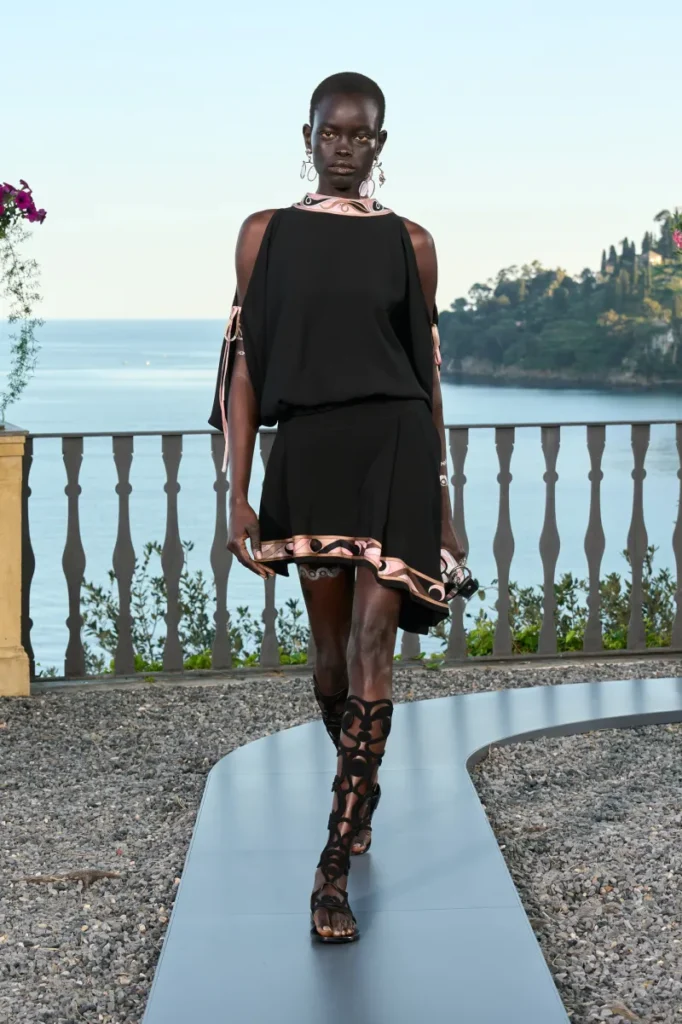
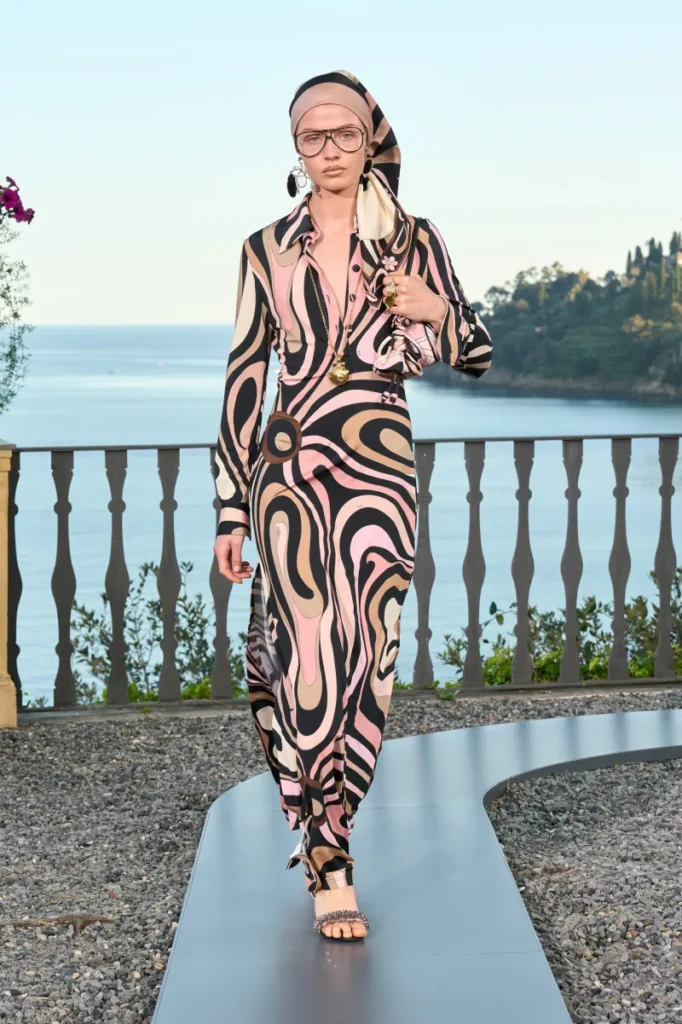
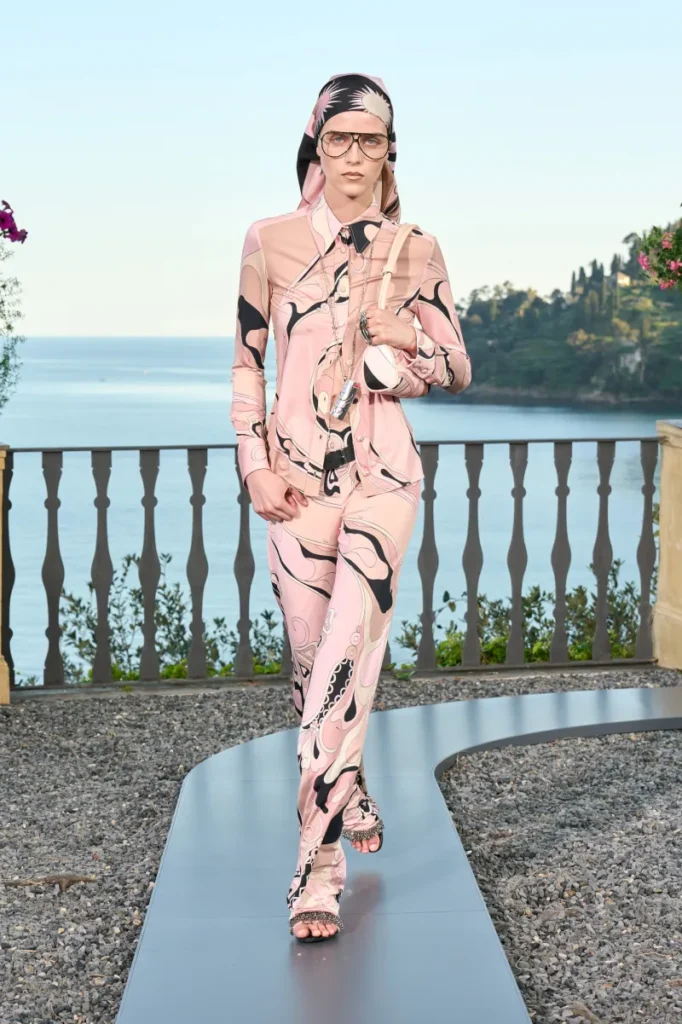
Before a select group of 230 guests, and against the romantic glow of a Ligurian sunset, Miceli delivered more than a fashion show — she staged a sensory experience. Silhouettes became a canvas for experimentation, and craftsmanship emerged as a quiet yet powerful protagonist. Billowy tops, seemingly sculpted by the breeze, were paired with parachute-nylon crinolines, shaped with laced cinches and embroidered with whimsical 3D appliqués. Fluid caftans stood in contrast to sharply cut asymmetrical tunics; bandeau minis were layered beneath oversized masculine shirting; and sheer, stretch-net column dresses clung to the body like tattoos.
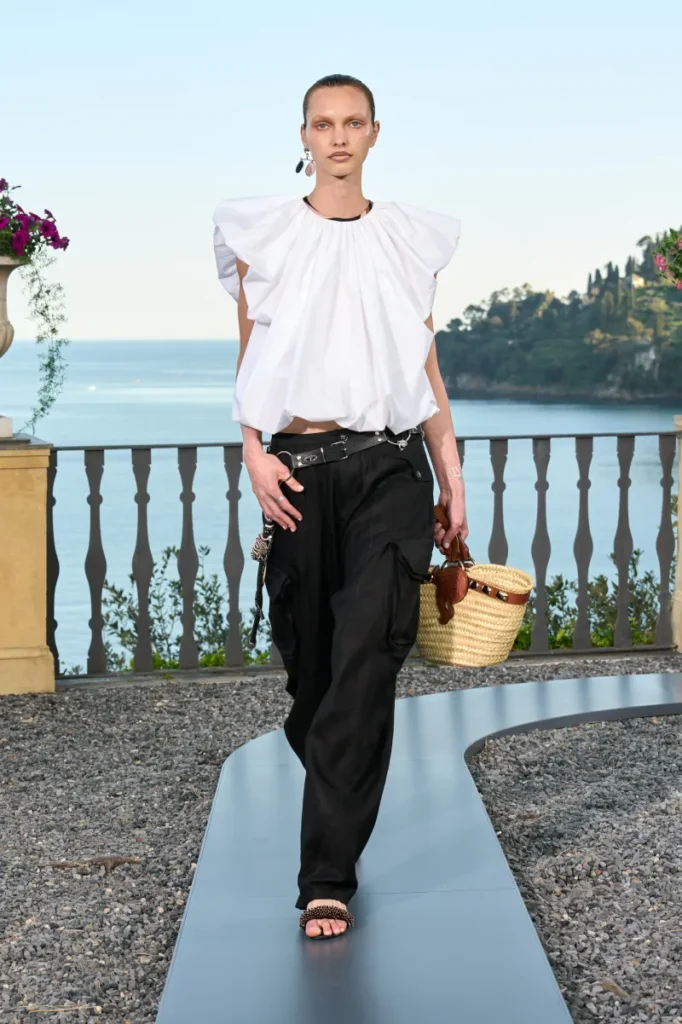
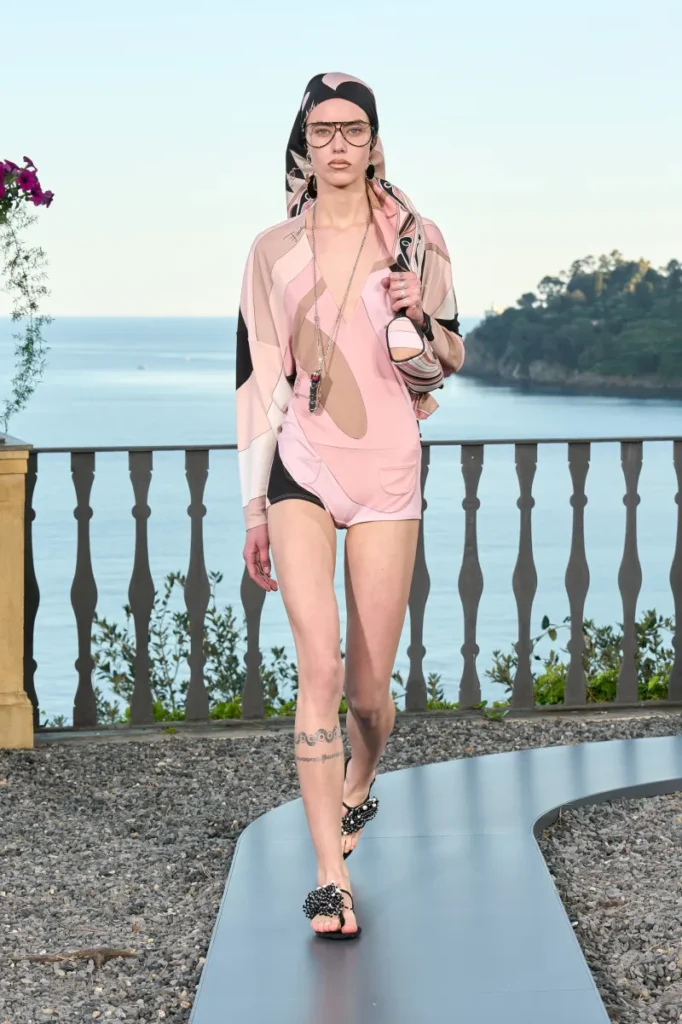
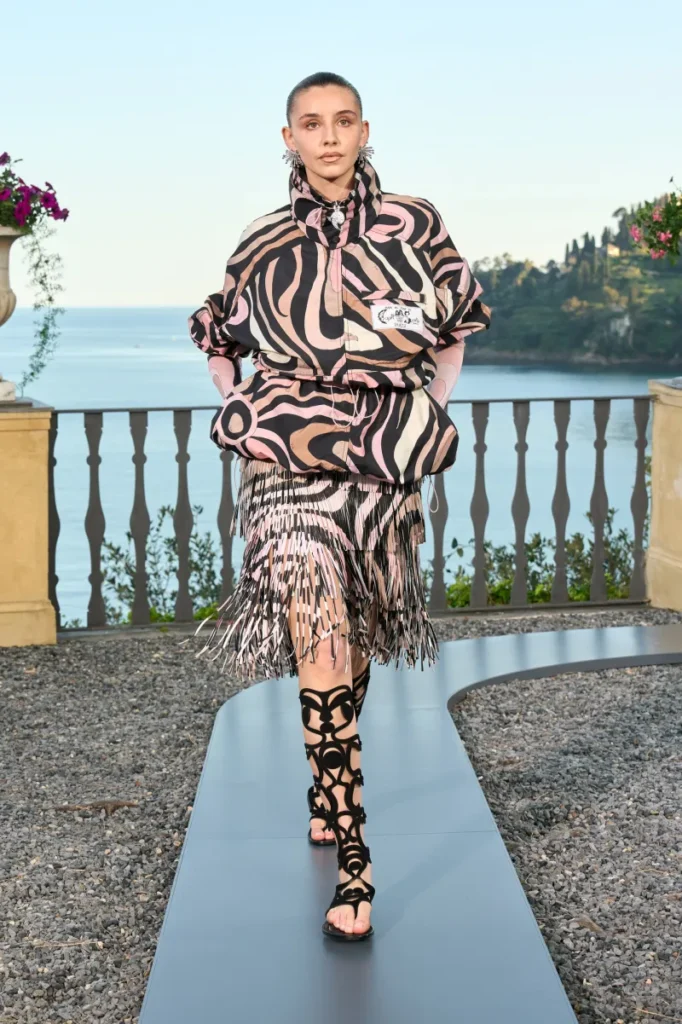
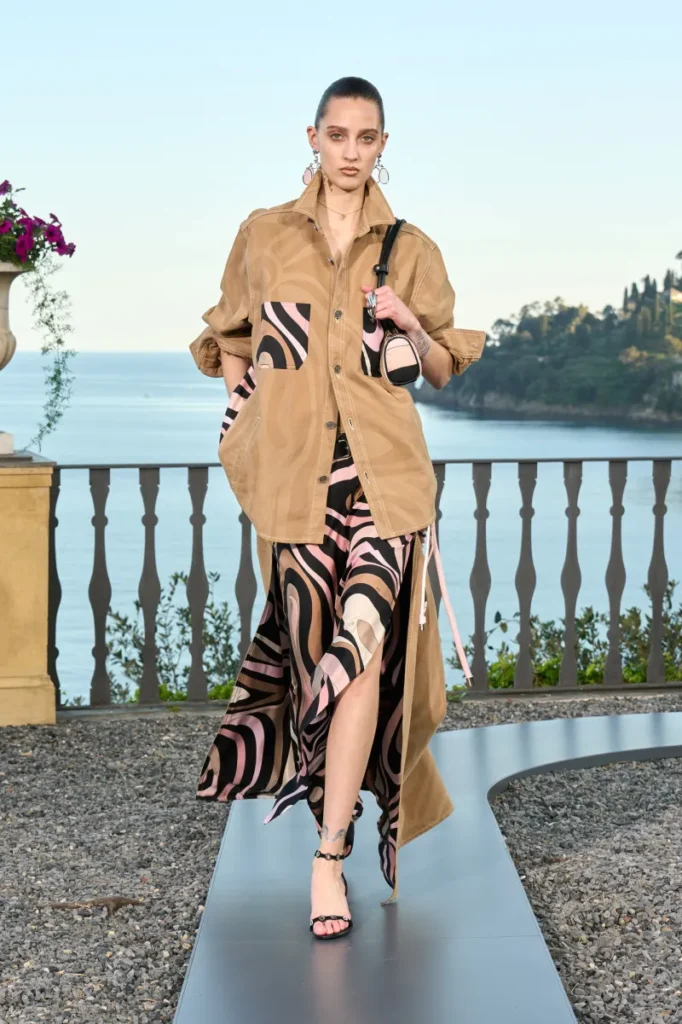
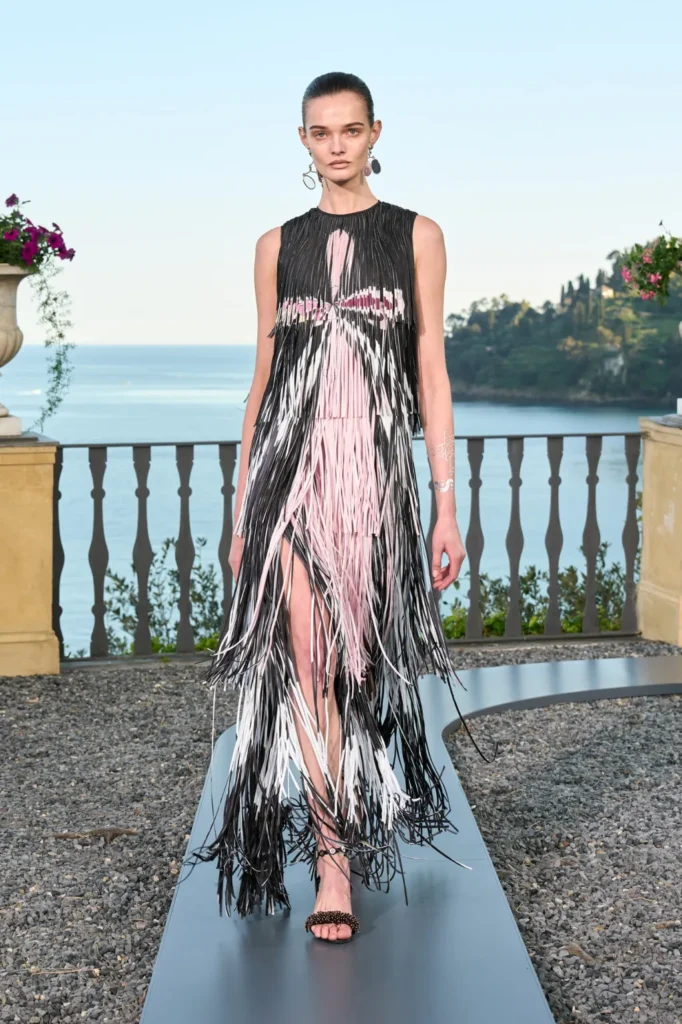
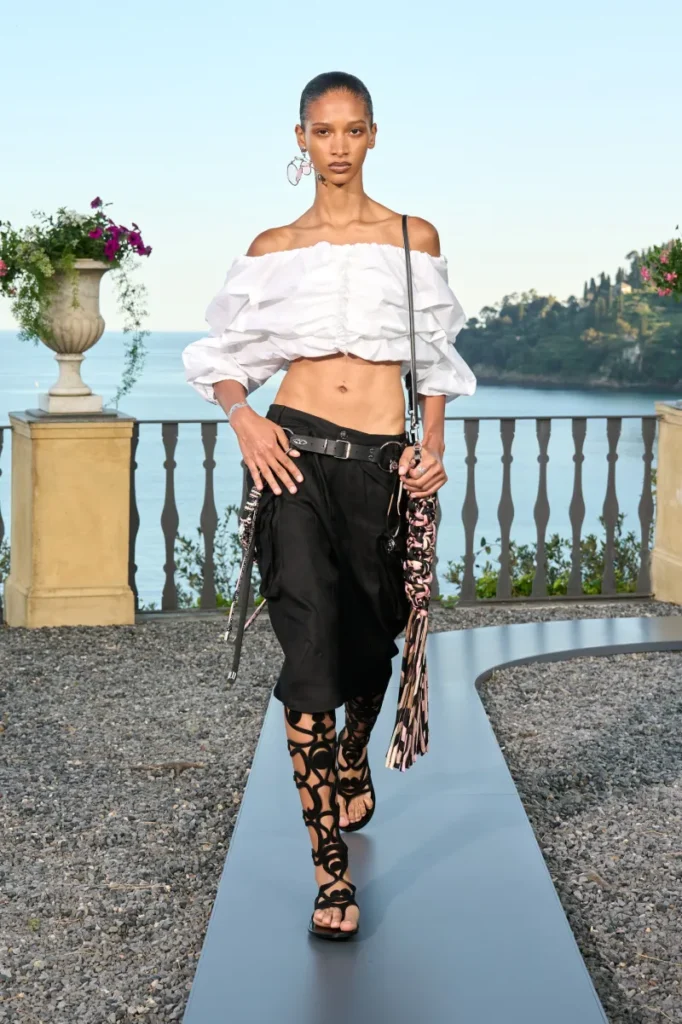
Miceli sharpened her vision by distilling Pucci’s typically exuberant color palette to a restrained trio: black, white, and soft blush pink. Yet the house’s signature energy remained fully intact — just more focused, intentional, and elegantly contained. The restraint allowed the details — the true stars — to take center stage: hand-sewn shells, kinetic fringe cascading from belted ponchos, printed tubular strands fluttering from shoulder to hem, and sequins that reimagined Pucci’s iconic Marmo print, inspired by sunlight reflecting on the sea.
Closing the show were Kristen McMenamy in a graphic black-and-white beaded dress and Naomi Campbell, radiant in a slinky sequined gown — two fashion icons in a fitting finale to a visual opera, where every element, from lace-up sandals mimicking tattoos to silver costume jewelry that etched across the skin, was choreographed with precision.
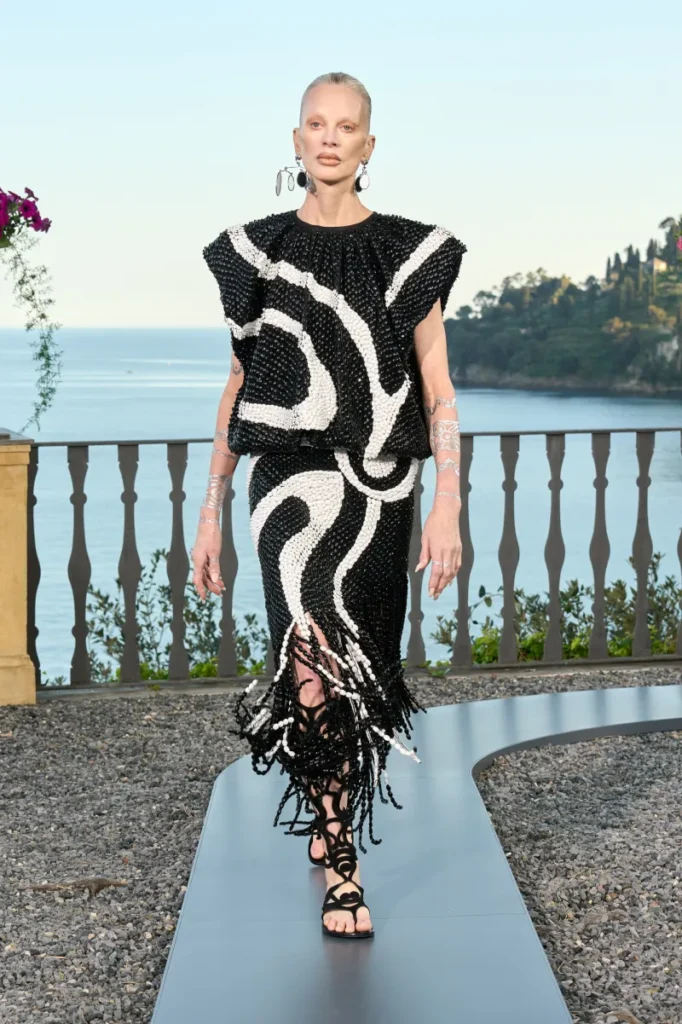
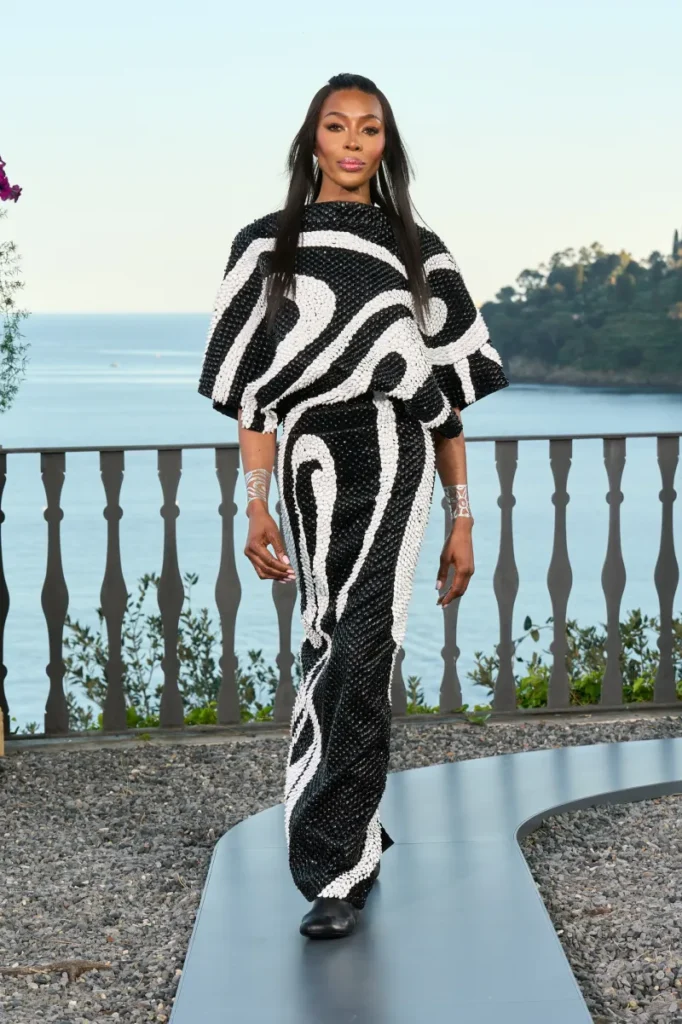
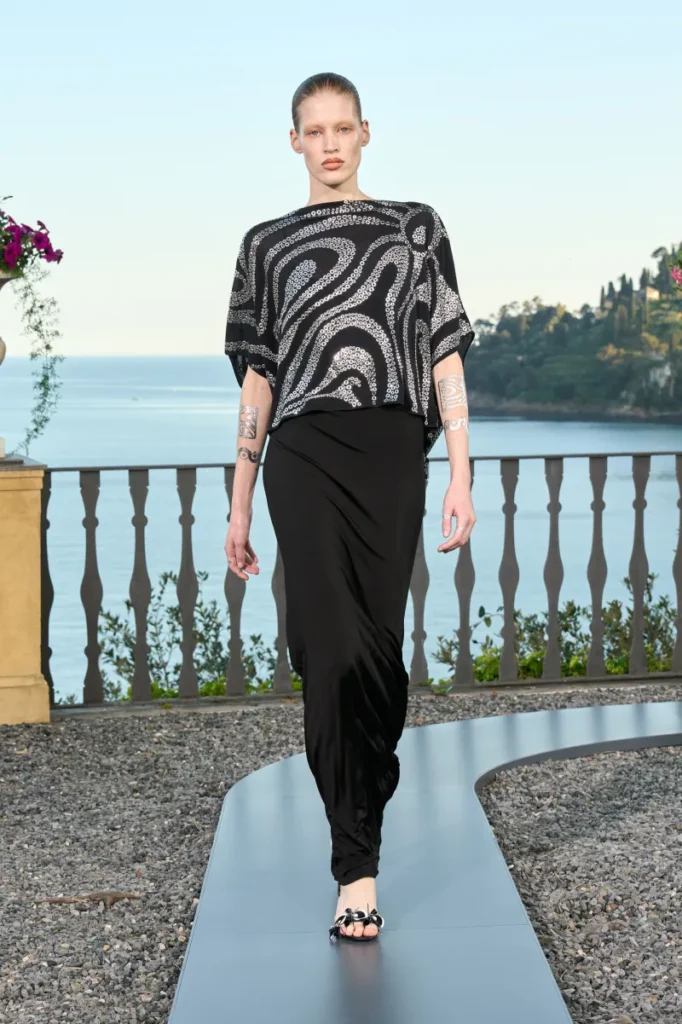
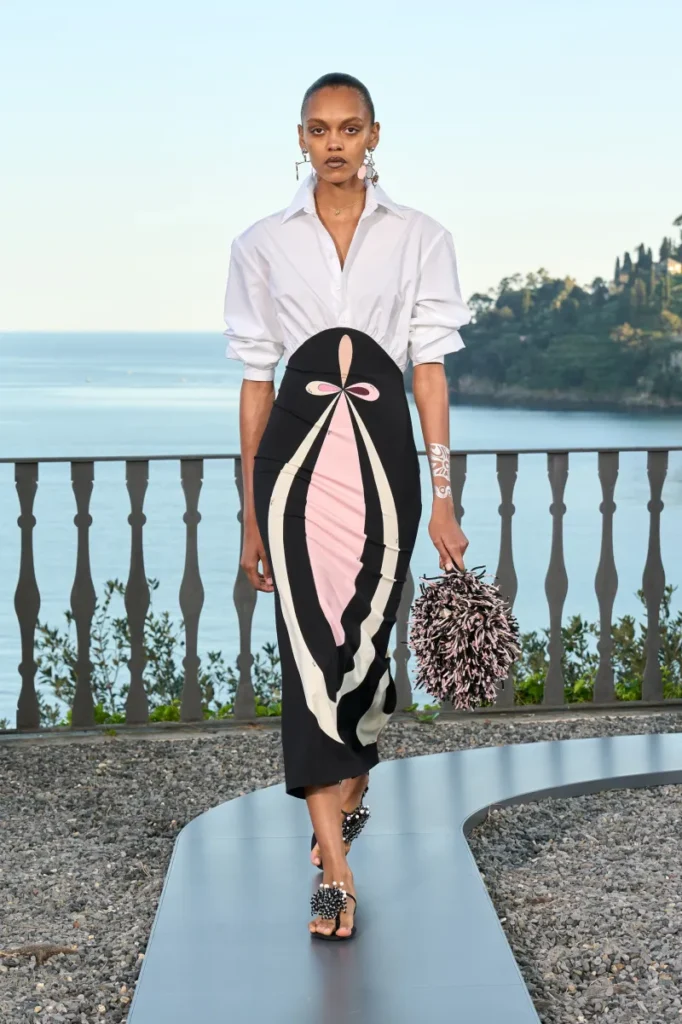
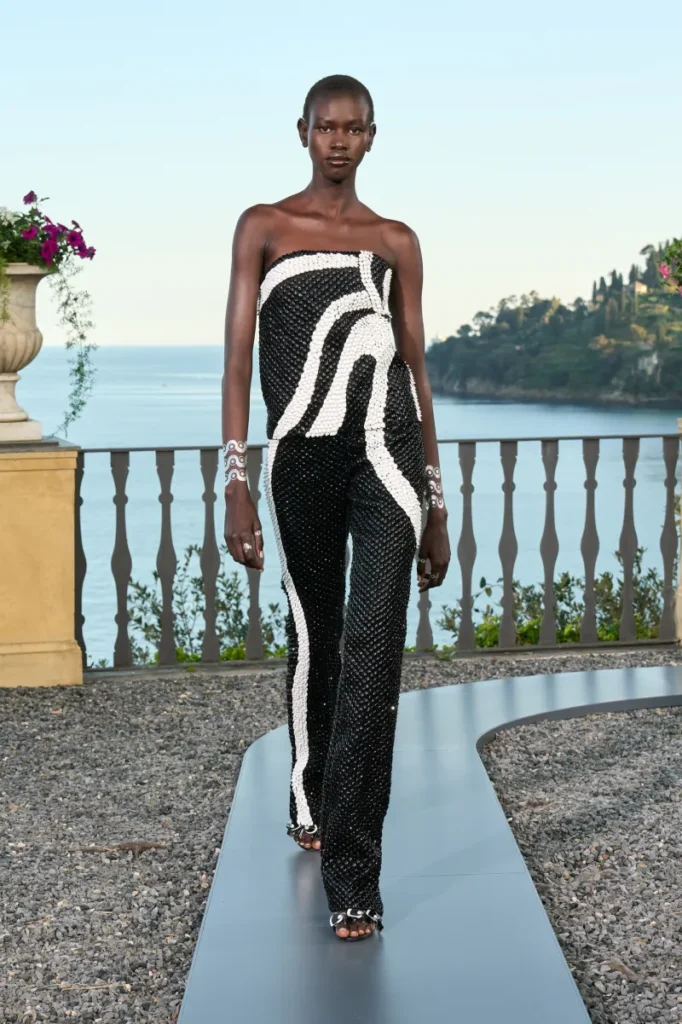
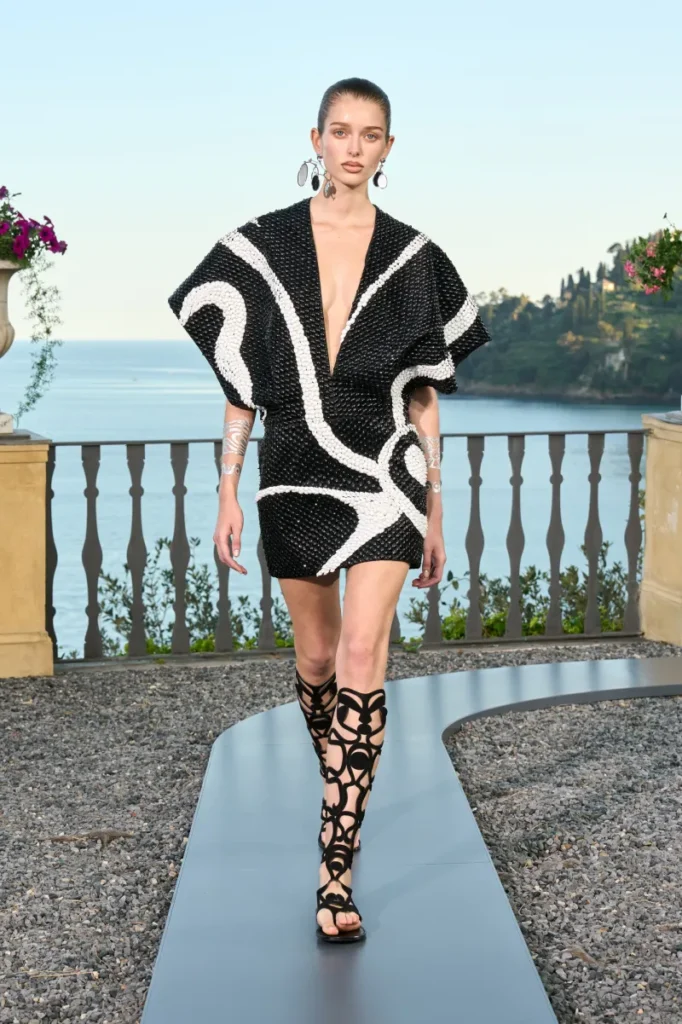
Miceli — balancing French savoir-faire with Italian exuberance — is not merely honoring Emilio Pucci’s legacy; she is reinterpreting it for the modern woman who craves lightness without frivolity, luxury without ostentation, elegance without rigidity. Her playful command of proportions — slim skirts beneath voluminous cotton poplin blouses, trompe-l’œil garments that appear as separates but are one-piece dresses — is evidence of a designer engaging in bold dialogue with the house’s heritage.
At a time when the world is divided between functional minimalism and maximalist escapism, Pucci under Miceli offers a third way: joyful, intelligent femininity that embraces artifice but elevates it to art. When fashion is done like this, it’s more than just clothing — it’s a necessary expression of beauty.

